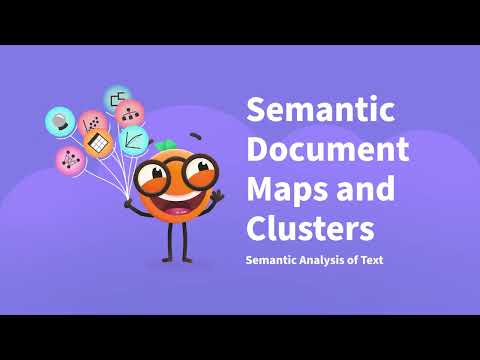The Differences Between Chatbots and Conversational AI
Conversational AI is the technology that allows chatbots to speak back to you in a natural way. Conversational AI can comprehend and react to both vocal and written commands. This technology has been used in customer service, enabling buyers to interact with a bot through messaging channels or voice assistants on the phone like they would when speaking with another human being. The success of this interaction relies on an extensive set of training data that allows deep learning algorithms to identify user intent more easily and understand natural language better than ever before.
Essentially, conversational AI strives to make interactions with machines more natural, intuitive, and human-like through the power of modern artificial intelligence. With the chatbot market expected to grow to up to $9.4 billion by 2024, it’s clear that businesses are investing heavily in this technology—and that won’t change in the near future. While they may seem to solve the same problem, i.e., creating a conversational experience without the presence of a human agent, there are several distinct differences between them. It can give you directions, phone one of your contacts, play your favorite song, and much more.
When you switch platforms, it can be frustrating because you have to start the whole inquiry process again, causing inefficiencies and delays. We’ve all encountered routine tasks like password resets, balance inquiries, or updating personal information. Rather than going through lengthy phone calls or filling out forms, a chatbot is there to automate these mundane processes. It can swiftly guide us through the necessary steps, saving us time and frustration. Conversational AI and chatbots are frequently addressed simultaneously, but it’s important to recognize their distinctions.
It is built on natural language processing and utilizes advanced technologies like machine learning, deep learning, and predictive analytics. Conversational AI learns from past inquiries and searches, allowing it to adapt and provide intelligent responses that go beyond rigid algorithms. Early conversational chatbot implementations focused mainly on simple question-and-answer-type scenarios that the natural language processing (NLP) engines could support. These were often seen as a handy means to deflect inbound customer service inquiries to a digital channel where a customer could find the response to FAQs. But because these two types of chatbots operate so differently, they diverge in many ways, too.
Conversational AI adapts and learns, building on its experience and its ability to understand natural language, context and intent. Rule-based chatbots cannot break out of their original programming and follow only scripted responses. The computer programs that power these basic chatbots rely on “if-then” queries to mimic human interactions. Rule-based chatbots don’t understand human language — instead, they rely on keywords that trigger a predetermined reaction. Also known as decision-tree, menu-based, script-driven, button-activated, or standard bots, these are the most basic type of bots. They converse through preprogrammed protocols (if customer says “A,” respond with “B”).
Yellow.ai offers AI-powered agent-assist that will effortlessly manage customer interactions across chat, email, and voice with generative AI-powered Inbox. It also features advanced tools like auto-response, ticket summarization, and coaching insights for faster, high-quality responses. Conversational AI can be used to better automate a variety of tasks, such as scheduling appointments or providing self-service customer support. This frees up time for customer support agents, helping to reduce waiting times. Both simple chatbots and conversational AI have a variety of uses for businesses to take advantage of. If a conversational AI system has been trained using multilingual data, it will be able to understand and respond in various languages to the same high standard.
Start generating better leads with a chatbot within minutes!
The system welcomes store visitors, answers FAQ questions, provides support to customers, and recommends products for users. Companies use this software to streamline workflows and increase the efficiency of teams. Chatbots appear on many websites, often as a pop-up window in the bottom corner of a webpage. Here, they can communicate with visitors through text-based interactions and perform tasks such as recommending products, highlighting special offers, or answering simple customer queries. Despite the technical superiority of conversational AI chatbots, rule-based chatbots still have their uses.
In this article, I’ll review the differences between these modern tools and explain how they can help boost your internal and external services. Popular examples are virtual assistants like Siri, Alexa, and Google Assistant. In this article, we’ll explain the features of each technology, how they work and how they can be used together to give your business a competitive edge over other companies. You can sign up with your email address, your Facebook, Wix, or Shopify profile.
The more personalization impacts AI, the greater the integration with responses. AI chatbots will use multiple channels and previous interactions to address the unique qualities of an individual’s queries. This includes expanding into the spaces the client wants to go to, like the metaverse and social media. More and more businesses will move away from simplistic chatbots and embrace AI solutions supported with NLP, ML, and AI enhancements. You’re likely to see emotional quotient (EQ) significantly impacting the future of conversational AI.
NLP is a subfield of artificial intelligence that focuses on enabling machines to understand, interpret, and generate human language. It involves tasks such as speech recognition, natural language understanding, natural language generation, and dialogue systems. Conversational AI specifically deals with building systems that understand human language and can engage in human-like conversations with users. These systems can understand user input, process it, and respond with appropriate and contextually relevant answers. Conversational AI technology is commonly used in chatbots, virtual assistants, voice-based interfaces, and other interactive applications where human-computer conversations are required. It plays a vital role in enhancing user experiences, providing customer support, and automating various tasks through natural and interactive interactions.
Conversational AI is the future
The more your conversational AI chatbot has been designed to respond to the unique inquiries of your customers, the less your team members will have to do to manage the inquiry. Instead of spending countless hours dealing with returns or product questions, you can use this highly valuable resource to build new relationships or expand point of sale (POS) purchases. Here are some of the clear-cut ways you can tell the differences between chatbots and conversational AI. Over time, you train chatbots to respond to a growing list of specific questions. An effective way to categorize a chatbot is like a large form FAQ (frequently asked questions) instead of a static webpage on your website. AI chatbots don’t invalidate the features of a rule-based one, which can serve as the first line of interaction with quick resolutions for basic needs.
- It gathers the question-answer pairs from your site and then creates chatbots from them automatically.
- To produce more sophisticated and interactive dialogues, it blends artificial intelligence, machine learning, and natural language processing.
- It eliminates the scattered nature of chatbots, enabling scalability and integration.
Pickup trucks are a specific type of vehicle while automotive engineering refers to the study and application of all types of vehicles. Conversational AI bots have found their place across a broad spectrum of industries, with companies ranging from financial services to insurance, telecom, healthcare, and beyond adopting this technology. For example, if a customer wants to know if their order has been shipped as well how long it will take to deliver their particular order. A rule-based bot may only answer one of those questions and the customer will have to repeat themselves again. This might irritate the customer, as they didn’t get the info they were looking for, the first time.
Businesses are always looking for ways to communicate better with their customers. Whether it’s providing customer service, generating leads, or securing sales, both chatbots and conversational AI can provide a great way to do this. As natural language processing technology advanced and businesses became more sophisticated in their adoption and use cases, they moved beyond the typical FAQ chatbot and conversational AI chatbots were born. As chatbots failed they gained a bad reputation that lingered in the early years of the technology adoption wave. With the help of chatbots, businesses can foster a more personalized customer service experience.
Start a free ChatBot trialand unload your customer service
These intuitive tools facilitate quicker access to information up and down your operational channels. ChatBot 2.0 doesn’t rely on third-party providers like OpenAI, Google Bard, or Bing AI. You get a wealth of added information to base product decisions, company directions, and other critical insights. That means fewer security concerns for your company as you scale to meet customer demand. Using ChatBot 2.0 gives you a conversational AI that is able to walk potential clients through the rental process. This means the assistant securing the next food and wine festival working at 3 AM doesn’t have to wait until your regular operating hours because your system is functioning 24/7.
It quickly provides the information they need, ensuring a hassle-free shopping experience. Now, let’s begin by setting the stage with a few definitions, and then we’ll dive into the fascinating world of chatbots and conversational AI. Together, we’ll explore the similarities and differences that make each of them unique in their own way.
Some operate based on predefined conversation flows, while others use artificial intelligence and natural language processing (NLP) to decipher user questions and send automated responses in real-time. Like smart assistants, chatbots can undertake particular tasks and offer prepared responses based on predefined rules. To produce more sophisticated and interactive dialogues, it blends artificial intelligence, machine learning, and natural language processing. Chatbots are software applications that are designed to simulate human-like conversations with users through text.
- This causes a lot of confusion because both terms are often used interchangeably — and they shouldn’t be!
- There is only so much information a rule-based bot can provide to the customer.
- Conversational AI helps with order tracking, resolving customer returns, and marketing new products whenever possible.
- Rule-based chatbots (otherwise known as text-based or basic chatbots) follow a set of rules in order to respond to a user’s input.
- However, the truth is, traditional bots work on outdated technology and have many limitations.
They skillfully navigate interruptions while seamlessly picking up the conversation where it left off, resulting in a more satisfying and seamless customer experience. You can foun additiona information about ai customer service and artificial intelligence and NLP. This is because conversational AI offers many benefits that regular chatbots simply cannot provide. Rule-based chatbots can only operate using text commands, which limits their use compared to conversational AI, which can be communicated through voice.
Conversational AI is capable of handling a wider variety of requests with more accuracy, and so can help to reduce wait times significantly more than basic chatbots. Conversational AI can also be used to perform these tasks, with the added benefit of better understanding customer interactions, allowing it to recommend products based on a customer’s specific needs. Users can interact with a chatbot, which will interpret the information it is given and attempt to give a relevant response. A growing number of companies are uploading “knowledge bases” to their website.
Everything from integrated apps inside of websites to smart speakers to call centers can use this type of technology for better interactions. With conversational AI technology, you get way more versatility in responding to all kinds of customer complaints, inquiries, calls, and marketing efforts. When a conversational AI is properly designed, it uses a rich blend of UI/UX, interaction design, psychology, copywriting, and much more. Everyone from ecommerce companies providing custom cat clothing to airlines like Southwest and Delta use chatbots to connect better with clients. Based on Grand View Research, the global market size for chatbots in 2022 was estimated to be over $5 billion.
Conversational AI chatbots allow for the expansion of services without a massive investment in human assets or new physical hardware that can eventually run out of steam. The only limit to where and how you use conversational AI chatbots is your imagination. Almost every industry can leverage this technology to improve efficiency, customer interactions, and overall productivity. Let’s run through some examples of potential use cases so you can see the potential benefits of solutions like ChatBot 2.0. These are software applications created on a specific set of rules from a given database or dataset.
Because your chatbot knows the visitor wants to edit videos, it anticipates the visitor will need a minimum level of screen quality, processing power and graphics capabilities. They’re now so advanced that they can detect linguistic and tone subtleties to determine the mood of the user. They remember previous interactions and can carry on with an old conversation.
The impact of chatbots and conversational AI
The feature allows users to engage in a back-and-forth conversation in a voice chat while still keeping the text as an option. Chatbots and voice assistants are both examples of conversational AI applications, but they differ in terms of user interface. The purpose of conversational AI is to reproduce the experience of nuanced and contextually aware communication. These systems are developed on massive volumes of conversational data to learn language comprehension and generation. With rule-based chatbots, there’s little flexibility or capacity to handle unexpected inputs. Nevertheless, they can still be useful for narrow purposes like handling basic questions.
Chatbot technology is rapidly becoming the preferred way for brands to engage with their audiences, offering timely responses and fast resolution times. That’s why chatbots are so popular – they improve customer experience and reduce company operational costs. As businesses get more and more support requests, chatbots have and will become an even more invaluable tool for customer service. Automated bots serve as a modern-day equivalent to automated phone menus, providing customers with the answers they seek by navigating through an array of options.
In a similar fashion, you could say that artificial intelligence chatbots are an example of the practical application of conversational AI. For those interested in seeing the transformative potential of conversational AI in action, we invite you to visit our demo page. There, you’ll find a comprehensive video demonstration that showcases the capabilities, functionalities, and real-world applications of conversational AI technology. And with the development of large language models like GPT-3, it is becoming easier for businesses to reap those benefits.
Both AI-driven and rule-based bots provide customers with an accessible way to self-serve. They’re popular due to their ability to provide 24×7 customer service and ensure that customers can access support whenever they need it. As chatbots offer conversational experiences, they’re often confused with the Chat PG terms “Conversational AI,” and “Conversational AI chatbots.” Some business owners and developers think that conversational AI chatbots are costly and hard to develop. And it’s true that building a conversational artificial intelligence chatbot requires a significant investment of time and resources.
Both chatbots and conversational AI are on the rise in today’s business ecosystem as a way to deliver a prime service for clients and customers. In a broader sense, conversational AI is a concept that relates to AI-powered communication technologies, like AI chatbots and virtual assistants. For this reason, many companies are moving towards a conversational AI approach as it offers the benefit of creating an interactive, human-like customer experience. A recent PwC study found that due to COVID-19, 52% of companies increased their adoption of automation and conversational interfaces—indicating that the demand for such technologies is rising. SendinBlue’s Conversations is a flow-based bot that uses the if/then logic to converse with the end user. You can set it up to answer specific logical questions based on the input given by the user.
By utilizing this cutting-edge technology, companies and customer service reps can save time and energy while efficiently addressing basic queries from their consumers. According to a report by Accenture, as many as 77% of businesses believe after-sales and customer service are the most important areas that will be affected by artificial intelligence assistants. These new virtual agents make connecting with clients cheaper and less resource-intensive. As a result, these solutions are revolutionizing the way that companies interact with their customers. What sets DynamicNLPTM apart is its extensive pre-training on billions of conversations, equipping it with a vast knowledge base.
Follow the steps in the registration tour to set up your website chat widget or connect social media accounts. There are hundreds if not thousands of conversational AI applications out there. And you’re probably using quite a few in your everyday life without realizing it.
When programmed well enough, chatbots can closely mirror typical human conversations in the types of answers they give and the tone of language used. Your typical automated phone menu (for English, press one; for Spanish, press two) is basically a rule bot. As businesses become increasingly concerned about customer experience, conversational AI will continue to become more popular and essential. As AI technology is further integrated into customer service processes, brands can provide their customers with better experiences faster and more efficiently. It is estimated that customer service teams handling 10,000 support requests every month can save more than 120 hours per month by using chatbots.
Conversational AI systems can also learn and improve over time, enabling them to handle a wider range of queries and provide more engaging and tailored interactions. The goal of chatbots and conversational AI is to enhance the customer service experience. Chatbots are like knowledgeable assistants who can handle specific https://chat.openai.com/ tasks and provide predefined responses based on programmed rules. It combines artificial intelligence, natural language processing, and machine learning to create more advanced and interactive conversations. Chatbots are computer programs that simulate human conversations to create better experiences for customers.
You can spot this conversation AI technology on an ecommerce website providing assistance to visitors and upselling the company’s products. And if you have your own store, this software is easy to use and learns by itself, so you can implement it and get it to work for you in no time. As we mentioned before, some of the types of conversational AI include systems used in chatbots, voice assistants, and conversational apps.
If yours is an uncomplicated business with relatively simple products, services and internal processes, a rule-based chatbot will be able to handle nearly all website, phone-based and employee queries. We saw earlier how traditional chatbots have helped employees within companies get quick answers to simple questions. For more than 20 years, the chatbots used by companies on their websites have been rule-based chatbots. Now, chatbots powered by conversational artificial intelligence (AI) look set to replace them. These tools must adapt to clients’ linguistic details to expand their capabilities.
When integrated into a customer relationship management (CRM), such chatbots can do even more. Once a customer has logged in, chatbots can be trained to fetch basic information, like whether payment on an order has been taken and when it was dispatched. After the page has loaded, a pop-up appears with space for the visitor to ask a question. There are, in fact, many different types of bots, such as malware bots or construction robots that help workers with dangerous tasks — and then there are also chatbots. There’s a lot of confusion around these two terms, and they’re frequently used interchangeably — even though, in most cases, people are talking about two very different technologies.
When OpenAI launched GPT-1 (the world’s first pretrained generative large language model) in June 2018, it was a real breakthrough. Sophisticated conversational AI technology had finally arrived and they were about to revolutionize what chatbots could do. Aside from answering questions, conversational AI bots also have the capabilities to smoothly guide customers through digital processes, like checking an invoice or paying online. They have a much broader scope of no-linear and dynamic interactions that are dialogue-focused. In some rare cases, you can use voice, but it will be through specific prompting.
This software goes through your website, finds FAQs, and learns from them to answer future customer questions accurately. This solves the worry that bots cannot yet adequately understand human input which about 47% of business executives are concerned about when implementing bots. While chatbots continue to play a vital role in digital strategies, the landscape is shifting towards the integration of more sophisticated conversational AI chatbots. While “chatbot” and “conversational ai” are often used interchangeably, they encompass distinct concepts with unique capabilities and applications. See why DNB, Tryg, and Telenor areusing conversational AI to hit theircustomer experience goals.
Picture a customer of yours encountering a technical glitch with a newly purchased gadget. They possess the intelligence to troubleshoot complex problems, providing step-by-step guidance and detailed product information. A customer of yours has made an online purchase and is eagerly anticipating its arrival. Instead of repeatedly checking their email or manually tracking the package, a helpful chatbot comes to their aid.
The cost of building a chatbot and maintaining a custom conversational AI solution will depend on the size and complexity of the project. However, it’s safe to say that the costs can range from very little to hundreds of thousands of dollars. Remember to keep improving it over time to ensure the best customer experience on your website. It may be helpful to extract popular phrases from prior human-to-human interactions. If you don’t have any chat transcripts or data, you can use Tidio’s ready-made chatbot templates. In today’s digitally driven world, the intersection of technology and customer engagement has given rise to innovative solutions designed to enhance communication between businesses and their clients.
Take time to recognize the distinctions before deciding which technology will be most beneficial for your customer service experience. Chatbot vs. conversational AI can be confusing at first, but as you dive deeper into what makes them unique from one another, the lines become much more evident. ChatBot 2.0 is an example of how data, generative large language model frameworks, and advanced AI human-centric responses can transform customer service, virtual assistants, and more. With less time manually having to manage all kinds of customer inquiries, you’re able to cut spending on remote customer support services. Using conversational marketing to engage potential customers in more rewarding conversations ensures you directly address their unique needs with personalized solutions. It uses speech recognition and machine learning to understand what people are saying, how they’re feeling, what the conversation’s context is and how they can respond appropriately.
Even when you are a no-code/low-code advocate looking for SaaS solutions to enhance your web design and development firm, you can rely on ChatBot 2.0 for improved customer service. The no-coding chatbot setup allows your company to benefit from higher conversions without relearning a scripting language or hiring an expansive onboarding team. Many businesses and organizations rely on a multiple-step sales method or booking process. A conversational AI chatbot lowers the need to intercede with these customers. It helps guide potential customers to what steps they may need to take, regardless of the time of day.
Most businesses rely on a host of SaaS applications to keep their operations running—but those services often fail to work together smoothly. Organizations have historically faced challenges such as lengthy development cycles, extensive coding, and the need for manual training to create functional bots. However, with the advent of cutting-edge conversational AI solutions like Yellow.ai, these hurdles are now a thing of the past. Chatbots, although much cheaper, largely give our scattered and disconnected experiences. They are often implemented separately in different systems, lacking scalability and consistency.
Conversational AI is a technology that simulates the experience of real person-to-person communication through text or voice inputs and outputs. It enables users to engage in fluid dialogues resembling human-like interactions. You can map out every possible conversational path and input acceptable responses to narrow down the customer’s intention. This conversational AI chatbot (Watson Assistant) acts as a virtual agent, helping customers solve issues immediately. It uses AI to learn from conversations with customers regularly, improving the containment rate over time.
This would free up business owners to deal with more complicated issues while the AI handles customer and user interactions. Traditional chatbots operate within a set of predetermined rules, delivering answers based on predefined keywords. They have limited capabilities and won’t be able to respond to questions outside their programmed parameters. Businesses worldwide are increasingly deploying chatbots to automate user support across channels. However, a typical source of dissatisfaction for people who interact with bots is that they do not always understand the context of conversations. In fact, according to a report by Search Engine Journal, 43% of customers believe that chatbots need to improve their accuracy in understanding what users are asking or looking for.
What Is Conversational AI? Examples And Platforms – Forbes
What Is Conversational AI? Examples And Platforms.
Posted: Sat, 30 Mar 2024 07:00:00 GMT [source]
Every conversation to a rule-based chatbot is new whereas an AI bot can continue on an old conversation. This gives it the ability to provide personalized answers, something rule-based chatbots struggle with. AI bots are more capable of connecting and interacting with your other business apps than rule-based chatbots.
Siri, Google Assistant, and Alexa all are the finest examples of conversational AI technologies. They can understand commands given in a variety of languages via voice mode, making communication between users and getting a response much easier. When compared to conversational AI, chatbots lack features like multilingual and voice help capabilities. The users on such platforms do not have the facility to deliver voice commands or ask a query in any language other than the one registered in the system. During difficult situations, such as dealing with a canceled flight or a delayed delivery, conversational AI can offer emotional support while also offering the best possible resolutions.
It eliminates the scattered nature of chatbots, enabling scalability and integration. By delivering a cohesive and unified customer journey, conversational AI enhances satisfaction and builds stronger connections with customers. Basic chatbots, on the other hand, use if/then statements and decision trees to determine what they are being asked and provide a response. The result is that chatbots have a more limited understanding of the tasks they have to perform, and can provide less relevant responses as a result.
Your customers no longer have to feel the frustration of primitive chatbot solutions that often fall short due to narrow scope and limitations. Initially, chatbots were deployed primarily in customer service roles, acting as first-line support to answer frequently chatbots vs conversational ai asked questions or guide users through website navigation. Chatbots, in their essence, are automated messaging systems that interact with users through text or voice-based interfaces. Conversational AI, on the other hand, brings a more human touch to interactions.
Imagine being able to get your questions answered in relation to your personal patient profile. Getting quality care is a challenge because of the volume of doctors and providers have to see daily. Conversational AIs directly answer everything from proper medication instructions to scheduling a future appointment. This is an exciting part of AI design and development because it fuels the drive many companies are striving for. The dream is to create a conversational AI that sounds so human it is unrecognizable by people as anything other than another person on the other side of the chat. Download The AI Chatbot Buyer’s Checklist and check the key questions to ask when you’re choosing an AI chatbot.
Some chatbots use conversational AI to provide a more natural conversational experience for their users, but not all do. If traditional chatbots are basic and rule-specific, why would you want to use it instead of AI chatbots? Conversational AI chatbots are very powerful and can useful; however, they can require significant resources to develop. In addition, they may require time and effort to configure, supervise the learning, as well as seed data for it to learn how to respond to questions.
It has fluency in over 135+ languages, allowing you to engage with a diverse global audience effectively. Finding the best answer for your unique needs requires a thorough awareness of these differences. Conversational AI draws from various sources, including websites, databases, and APIs. Whenever these resources are updated, the conversational AI interface automatically applies the modifications, keeping it up to date. For more information about our product and services, please contact us today – lets extend intelligence in your organization.
Using that same math, teams with 50,000 support requests would save more than 1,000 hours, and support teams with 100,000 support requests would save more than 2,500 hours per month. In a nutshell, rule-based chatbots follow rigid “if-then” conversational logic, while AI chatbots use machine learning to create more free-flowing, natural dialogues with each user. As a result, AI chatbots can mimic conversations much more convincingly than their rule-based counterparts.







